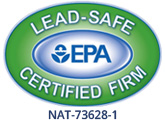How to Insulate Your Pipes for Winter
 Burst pipes can be a structural and financial disaster for homeowners. When water freezes inside a pipe and expands, the resulting damage could include mildew growth and ruined furniture. In addition to plumbing repairs, you might need mold remediation and to replace unsalvageable items.
Burst pipes can be a structural and financial disaster for homeowners. When water freezes inside a pipe and expands, the resulting damage could include mildew growth and ruined furniture. In addition to plumbing repairs, you might need mold remediation and to replace unsalvageable items.
To reduce these risks, property owners are advised to fully insulate pipes and take measures to ensure warm air circulates throughout the house. Extra care should be given to pipes that run close to a garage, shed or other outdoor areas exposed to freezing temperatures. Get started with the following tips.
Ahead of Extreme Winter Weather
Have your home assessed during spring, summer and fall to identify which pipes may require more insulation. At this point, strategies include:
- Protecting Exposed Pipes: Fiberglass or foam insulation offers the best protection but pipe sleeves, heat tape and heat cables can provide a quick solution before you make these modifications. Pay attention to areas that don’t receive much heat like the attic, basement and crawl spaces, as these pipes have a greater risk of bursting.
- Identifying Leaks: To limit the amount of cold air entering your home in winter, have leaks identified – particularly those close to plumbing – and close them with caulk or foam insulation.
As the Winter Season Unfolds
Once winter has begun:
- Shut off and drain pipes passing to the outdoors. Commonly, these include hookups for a garden hose or sprinkler and irrigation pipes. Turn off the valve traveling to the pipe and drain it of all water. Also consider adding faucet covers to exposed outdoor pipes.
- Keep a consistent interior temperature. If you’ll be away during winter, allow a moderate amount of heat to circulate through your home. Leave cabinet doors open, especially those underneath a bathroom or kitchen sink, so heat can access exterior walls.
- Check the forecast to see when a freeze is predicted. To ensure water can flow through your plumbing, let water slowly drip from the faucets to keep the system active, focusing particularly on those located near exposed pipes. If temperatures drop even further, consider having water drip in all areas of your home.
What If Your Pipes Freeze?
To avoid the costly aftermath of a burst pipe, know how to prevent this disaster from occurring:
- Understand the Signs: If only a trickle or no water comes out when you open the valve for a faucet, you may be dealing with a frozen pipe. Call your plumber and attempt to thaw the pipe.
- Thaw the Pipe: Before the plumber arrives, keep the faucet on and try to warm up the pipe with a hair dryer, heat pad or heat cable. Due to melting and fire risks, never use an open flame near a pipe. From here, check to see if the water pressure starts to return. Also consider adding temporary insulation to prevent further freezing.
Whether you’re dealing with frozen pipes this winter or need to talk about insulation, contact the plumbers at MJ Fahy & Sons to learn more.




